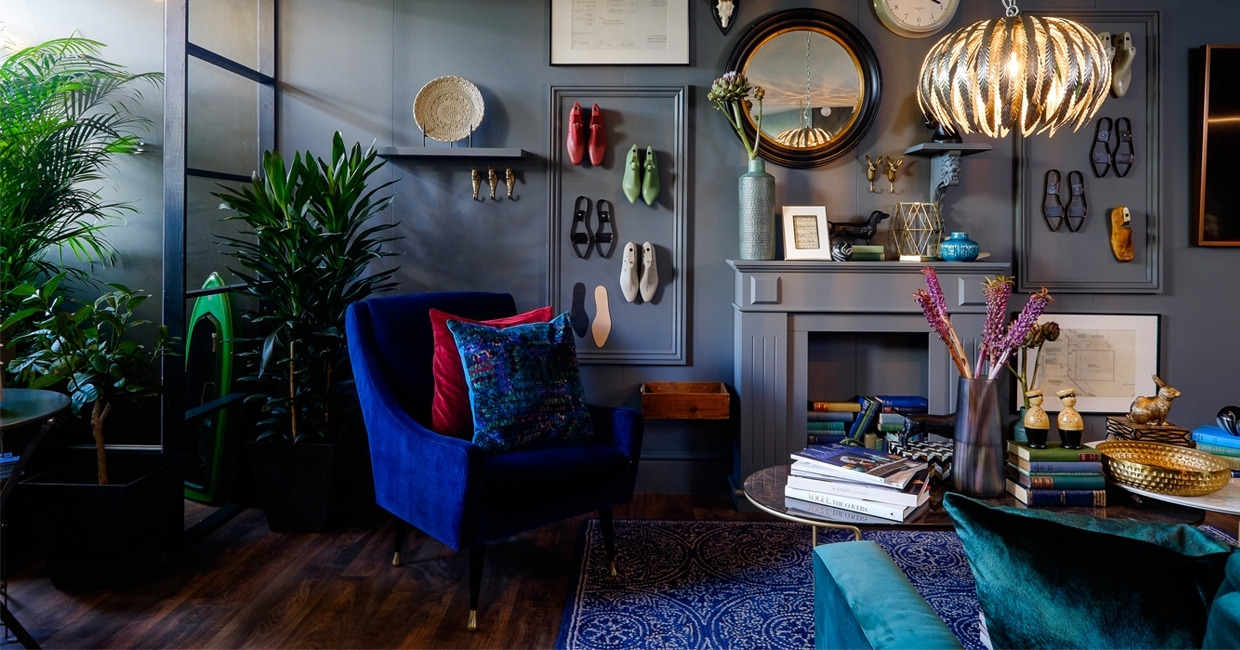Did you know that sales of velvet-upholstered sofas shot up at John Lewis this year? Or that Millennial Pink has proved such a popular colour in 2017 that bedlinen sales in the shade grew by 28%? John Lewis’ annual retail report delivers an interesting (and sometimes entertaining) snapshot of the nation’s product tastes – but, crucially, it’s also a valuable bellwether of consumer behaviour …
2017 was the year in which voice-activated technology took root in our homes, khaki jackets were all the rage, and searches for unicorn-related goods soared 70%. These esoteric demands have not come about by chance, but are the result of an unstable political and economic backdrop which has prompted shoppers to seek both stability and escapism in their purchases.
GfK’s Consumer Confidence Barometer returned consistently negative measures this year, hitting its lowest trough in July, an echo of the post-Brexit shock of 2016. Meanwhile, GfK’s Major Purchase Index, which tracks consumer willingness to splash out on big-ticket items, has fared similarly badly.
Add to this picture a stalling housing market, growing inflationary pressures, fluctuating exchange rates and ongoing political uncertainty, and it’s easy to see why even this most beloved of retailers had a difficult year, its Home division sales just about managing to hold the line.
Nonetheless, John Lewis is prepared for any eventuality as it enters peak trading season – the holidays are coming, and the retailer will doubtless prove its ability to identify, meet and pre-empt customer demand once again.
Yet, as the John Lewis Retail Report reveals, there’s more to to be derived from sales data than our product preferences, and that lies in what it reveals about customer behaviour. How are we shopping? How is our approach changing? And how can retail keep up with our demands?
Here’s just a few of the report’s highlights …
Cutting down the clutter
Social media has a lot to answer for. More and more of us are demonstrating our creative chops by taking snaps of our lovingly-dressed homes and sharing these photos on platforms such as Instagram and Facebook. According to the report, the desire to create inspirational, well-framed interior designs has led to a demand for more ordered rooms, free from bric-a-brac.
John Lewis saw sales of home storage items increase by 15% this year, while, in July, Instagram’s #Shelfie craze, in which users took photos of books and ornaments in situ, helped lift sales of bookcases by 11% – indeed, in a marked turnaround of consumer tastes, physical books have grown in popularity, while sales of eReaders have declined.
These developments hint at consumers’ desire to impose order on the world around them, and a yearning for simplicity.
Rise of the mobile consumer
Recent years have seen a seismic shift in the routes shoppers take to market. According to internet retail trade group IMRG, two-thirds (66%) of visits to retail websites between November 2016 and January 2017 came from mobile devices – up 13% YOY.
Multichannel (or indeed omnichannel) is today’s retail reality, and John Lewis’ findings reflect this growing demand for mobile shopping. In the last five years, visits to its website from smartphones and tablets have increased from 42% in 2013 to 64%.
It’s important to note that, in John Lewis’ case, this is not a reflection of a customer base that’s moving inexorably online, but rather one that chooses to engage with the retailer through a combination of channels – wherever it finds most convenient, transparent and helpful. Indeed, John Lewis found that 20% of its customers’ online purchases are preceded by in-store research, and that more than half of the orders placed (53%) are being picked up from stores in person (Click & Collect).
Overnight sensation
‘Shoppertainment’ and the need to offer customers a more enriching experience is a pressing priority – many of the world’s biggest shopping centres boast not only hospitality outlets, but cinemas, bowling alleys, gyms and fairground rides, helping entice customers to visit in greater numbers, stay for longer, spend more and make a return visit. It’s also the rationale behind in-store events, chill-out areas and free Wi-Fi.
John Lewis has found that today’s Millennial shoppers (anyone born in the Eighties, Nineties or early Noughties) are three times more likely to engage in a leisure activity when out shopping than they were in 2013.
As well as developing a range of unique experience packages (from celebrity cooking demonstrations to sessions with a personal stylist), John Lewis has gone a step further to bring its shopping offer to life, offering customers the chance to sleep in its stores overnight.
The Residence – a set of fully-furnished apartments in John Lewis’ Oxford Street, Liverpool and Cambridge stores – offer an immersive shopping experience, where every item to hand can be purchased. In the first fortnight alone, 3000 customers applied for the chance to sleep or dine in one of these apartments.
So, where next? John Lewis predicts that 2018 will be the year in which animal-themed fabric and wallpaper prints come to the fore, alongside Japanese-inspired minimalist design.
Whatever direction its customers’ tastes take, we can be sure that John Lewis will be paying close attention to the behaviours behind the trends.
Read the John Lewis Retail Report 2017: How We Shop, Live & Look, here.












